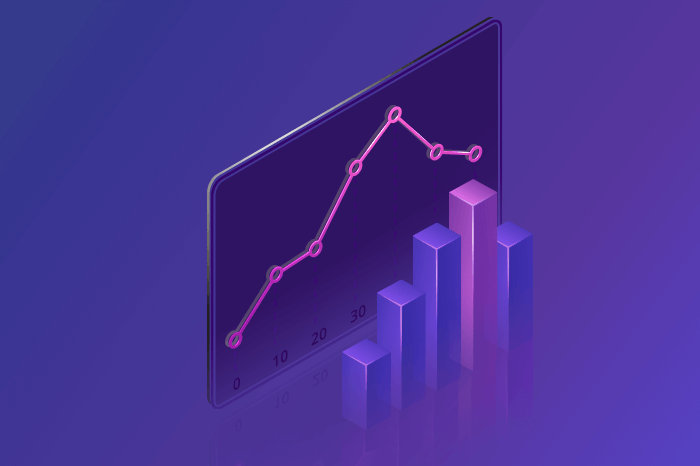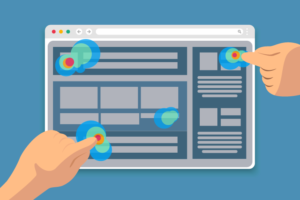
Predictive analysis and a bird’s-eye view of the user’s journey from your website to your app are a few of the remarkable features introduced to Google Analytics 4 (GA4).
Universal Analytics is on the way to being phased out slowly and gradually since July 1, 2023, as it stopped processing new data. This article is about the new features of Google Analytics 4 and how you can make the most of them.
What is Google Analytics 4?
Simply put, Google Analytics 4 is a web analytics tool that allows you to understand your website and app user metrics better. Initially, Google Analytics could only analyze the behavior of users on the website. However, with Google Analytics 4, you can track the user’s journey from website to app.
GA4 also takes you closer to understanding the user’s buying journey through the Explorations feature. Instead of report-based data, Google Analytics focuses on event-based data.
Let’s understand these new features of Google Analytics 4 that take analytics to the next level.
Google Analytics 4 Features
Customer-centric measurements with the introduction of events
An event is anything a user does on your website. This action is termed an interaction and is recorded in analytics. The analytics then study this event. This event can be clicking a link on your website, a complete purchase (conversion event), leaving a comment, or anything else.
The events are sent to analytics not only through your website but your business app as well.
Google Analytics 4 is capable of collecting various types of events, such as:
- Automatically collected events: events GA4 collects by default
- Enhanced measurement events: record additional interactions apart from standard events.
- Custom events: events you create when the existing defined events aren’t working for you.
Once events are collected, the data is sent in a form for a real-time report or debug view report, accessed through the Analytics account.
Built-in automation
AI and machine learning have seen tremendous involvement in every field, and Google Analytics cannot be left behind.
Google Analytics 4 has some remarkable automation features to predict users’ search behavior. Here are key features added to Google Analytics 4 as part of automation:
- Predictive capabilities
Predictive capabilities are the most talked-about feature of Google Analytics 4. This feature uses machine learning to predict a user’s future actions when on your website or app and triggers actions that can urge the user to make the move.
This feature can provide metrics like churn probability, revenue prediction, and purchase probability. With churn probability, the website owner can know which user will likely not return to their website after being active for a week.
- Proactive insights
Proactive insights give website owners actionable insights to stay aware of the latest trends and growth opportunities in their market.
- Answers to your questions
Google Analytics 4 now acts as a dedicated browser for website owners, as they can use the search bar to ask anything, like finding a metric or a report of meaningful insight.
Integrates with other Google products

Google Analytics 4 is now seamlessly integrated with other Google solutions like Google Ads, Google Cloud, Google Ad Manager, Google Play, Google Search Console, and more. Through this integration, website owners can sync meaningful data into Google Analytics, allowing it to produce more concrete insights.
Google Analytics 4 integration with Google Ads is a highlight for any website owner. This feature is most beneficial if you use Google Ads to advertise your product in search results. The integration bridges the gap in how you analyze your Google ad results.
Integrating the two will result in a more effective launch of Google ad campaigns and help you strategically place your ads across different marketing channels and demographics. In fact, website owners can also apply the insights from Analytics to Google Ads Manager to optimize their users’ experiences on both the website and the app.
Another important integration is BigQuery, Google Cloud’s enterprise-level data warehouse service. This integration is useful for website owners with huge traffic. GA4 cannot store such large amounts of data, so using a cloud platform like BigQuery makes sense.
Improved privacy controls
The audience is becoming more aware of where their private information is being used. At the same time, governments and industries are also becoming wary of addressing these privacy issues. GA4, with its improved privacy feature, claims to be more transparent about collecting, retaining, and using data collected from users. To make it more consistent with privacy regulations like CCPA and GDPR, GA4 enables users to request changes in how their personal information is utilized.
The new features, such as customer-centric measurements, identity resolution, and predictive capabilities, no longer rely on stealing users’ data using IP addresses, third-party cookies, and other hardware identities. Instead, it’s up to the website user to use it in compliance with data privacy laws, such as using explicit permission of users to gather cookies, using IP anonymization, and not sharing GA4 data with other Google-integrated services.
A new and better report interface
The Events feature is only useful if an efficient report creation system exists. GA4 takes creating Reports to the next level by making them more user-friendly, visually understandable, and customizable.
It now uses advanced techniques like exploration to present analytical data. It helps you explore your data in depth through different techniques like free flow exploration, cohort exploration, funnel exploration, path exploration, user exploration, segment overlap, and user lifetime.
The insights gathered through these explorations go beyond those generated from standard reports. Furthermore, leveraging the Explorations Editor can help you understand each user better.
The data retention and data limits in GA4 more or less remain the same. You can retain your audience data for two months in GA4 by default, which can be extended to up to 14 months. All other event data can be retained for up to 50 months (through the integration of 360 only).
Final Words
This list contains all the main features added to GA4. However, there is still much more to uncover when it comes to Google Analytics 4 updates. Some businesses have already started to increase their conversion rates through GA4 implementation. Better late than never. It’s time for you to get started, too.





Join the Discussion